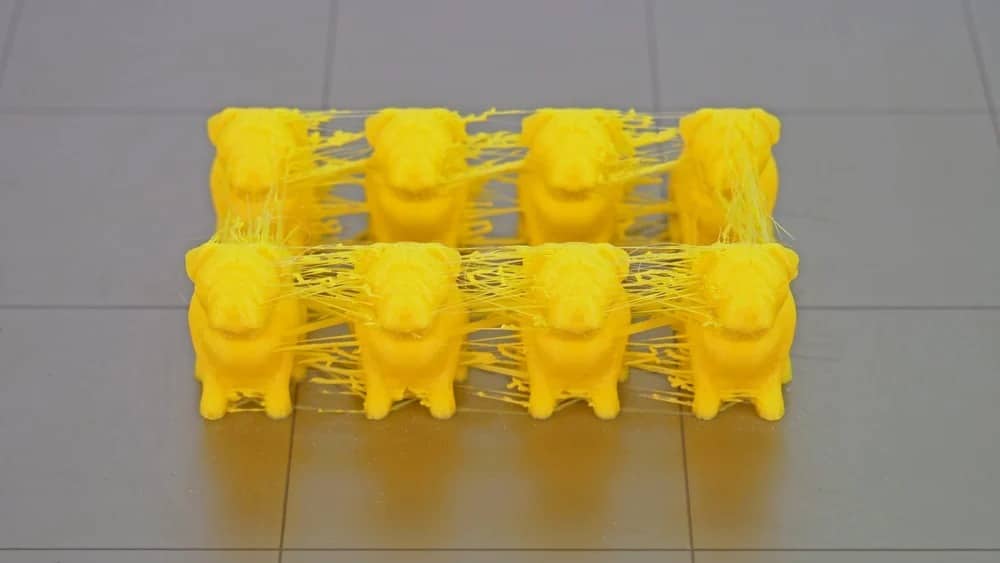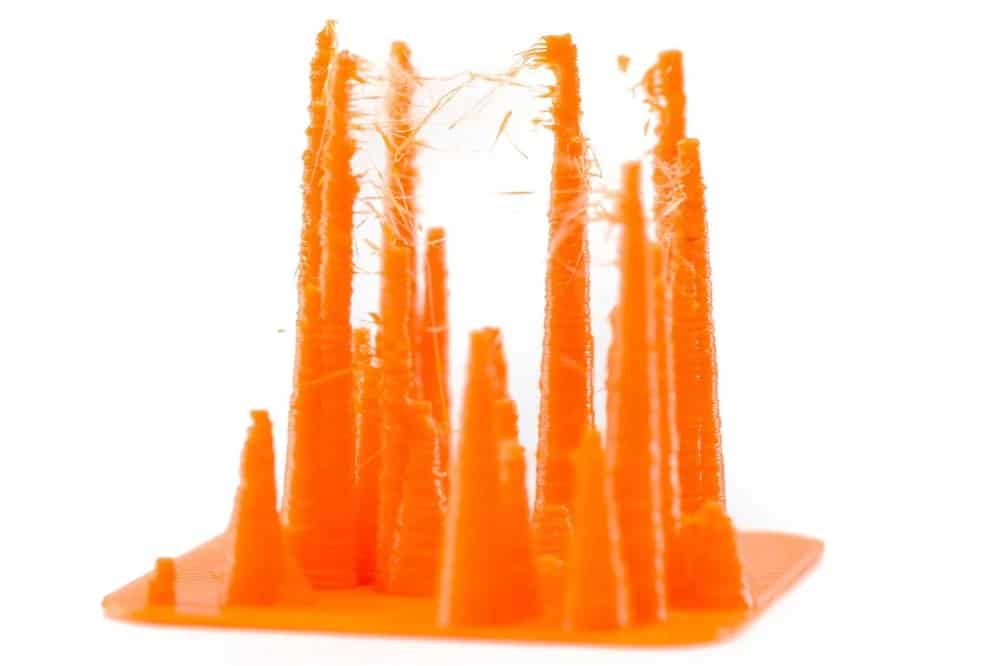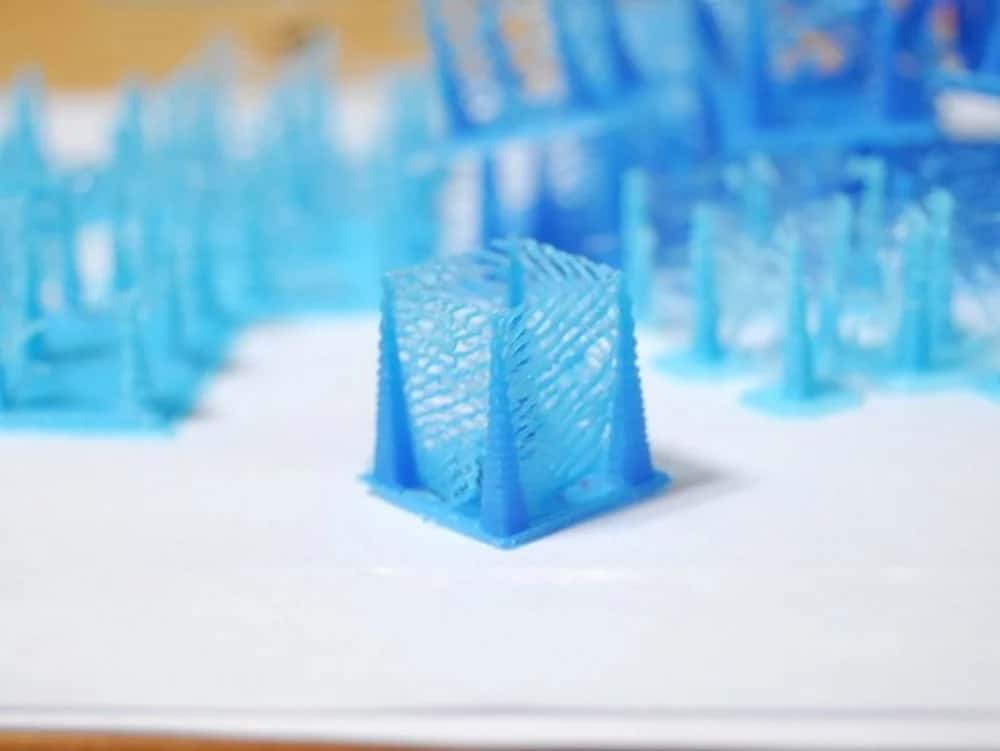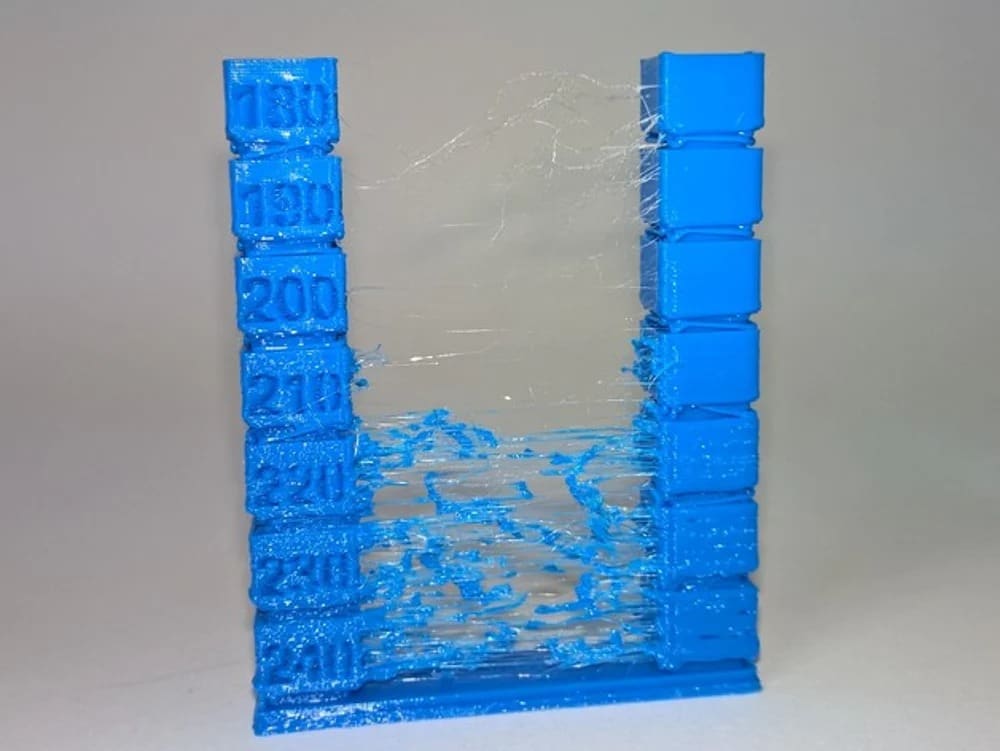PETG is a great material to 3D print with, even if it is a little stringy… Here are three easy ways to fix PETG stringing!

What is PETG Stringing?
Stringing is a problem very common for 3D printing. Basically, stringing or oozing occurs when melting filament oozes while the nozzle is traveling between two points. This problem gives prints annoying “hairs” that can be difficult to remove.
PETG is especially notorious for stringing because it requires a relatively high temperature to ensure good flow. This increased temperature can encourage strings, allowing the filament to freely flow while traveling between two points.
This article will explore 3 tips to print PETG without those pesky strings.
Tip #1: Increase Retraction and Decrease Minimum Travel Distance

If you’re struggling with stringing, you should first tweak your retraction settings. When retracting, the extruder motor pulls a set distance of filament from the nozzle. This operation should prevent unwanted oozing either on or between printed parts.
In your slicers settings, first try to increase the retraction distance by 1 mm increments and the retraction speed by 5 mm/s increments. (Note: If you’re using a Bowden setup, your printer will require higher retraction distance and speed.) Then, you can tweak these settings in tiny increments to dial in the perfect retraction settings for your printer.
Related to retraction, you can also try reducing the minimum travel distance. This setting decides the minimum distance the printhead needs to travel before fully retracting the filament. Reducing it will make sure that even small distances are rid of strings.
Tip #2: Increase Travel Speed

Another quick fix for PETG stringing is to increase travel speed. The quicker the nozzle moves between two points, the less time melting filament will have to ooze.
Try increasing your printers travel speed in 10 mm/s increments until you find the perfect speed. Some makers even use travel speeds of up to 200 mm/s.
Tip #3: Decrease Nozzle Temperature

If fixing your settings for retraction and speed don’t work, it’s time to chill out — literally. In other words, decrease your printer’s nozzle temperature. Obviously, if your filament is getting too hot, it will freely ooze regardless of retraction or travel settings.
To tweak your printer’s temperature, try printing a temperature calibration block, or a “temperature tower”. Most come with instructions to find the perfect nozzle temp in a single test! Be careful to find the perfect temperature so as not to eliminate stringing at the cost of smooth surface finish.
Happy Printing!